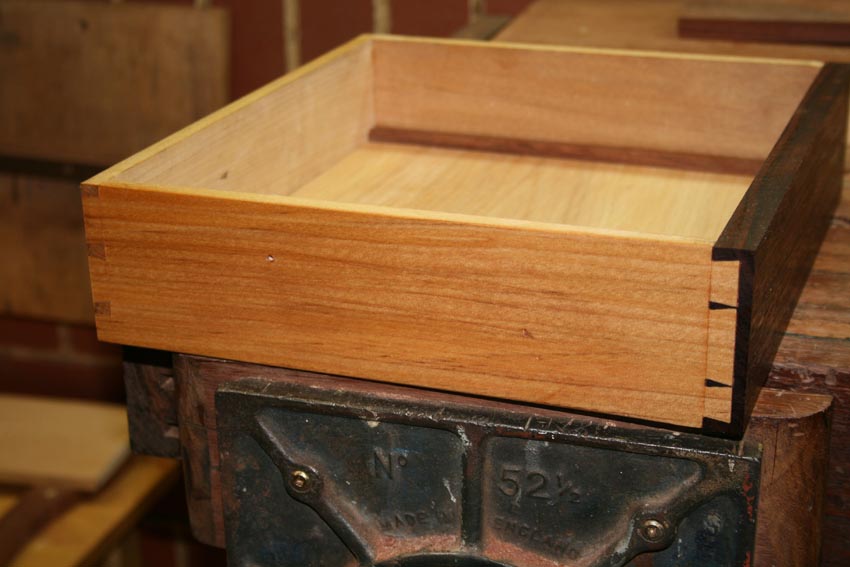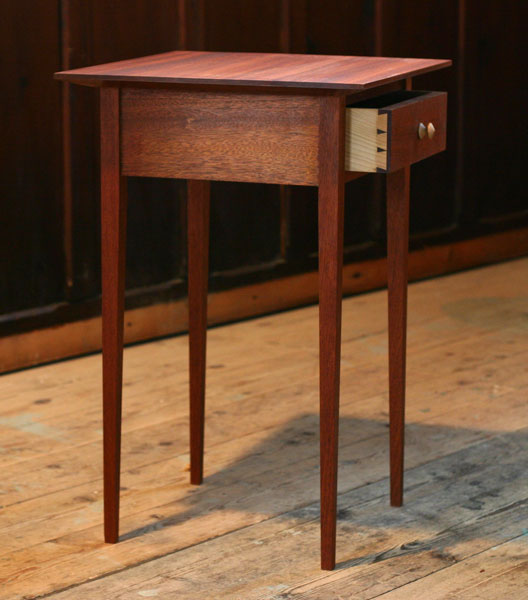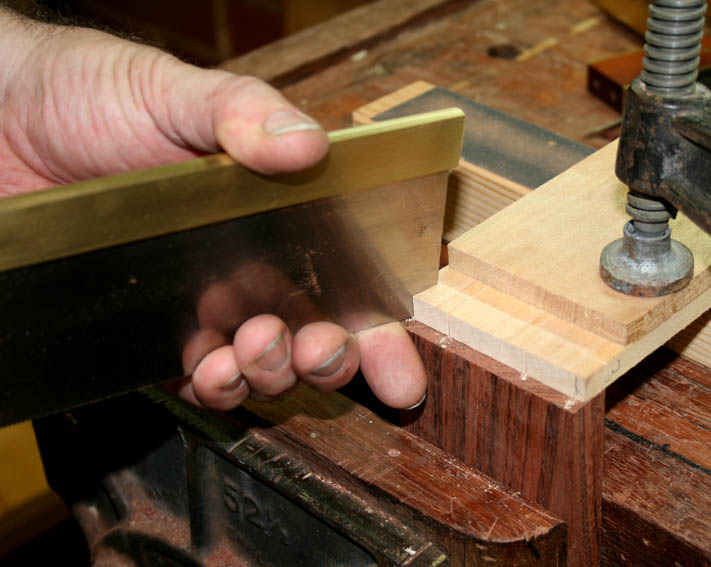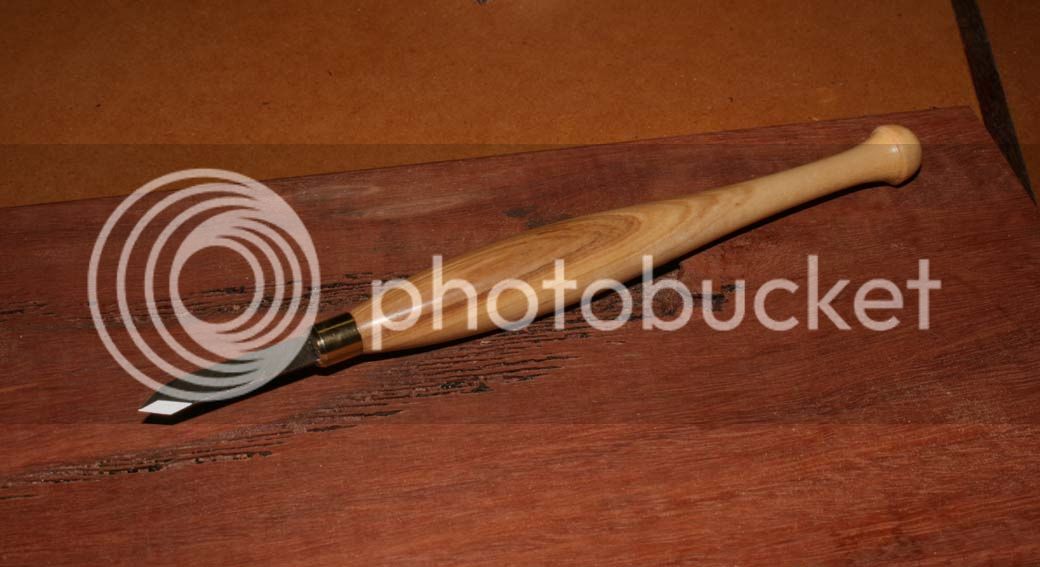Modernist":m1vzd84w said:
A few points Derek
I don't understand how you get 3mm tails?......
Derek means 3mm pin holes (or pins). It's easier to think in terms of pins and pinholes.
I've looked at quite a few
starting with the pin holes;
1 all marked with a deep incised or cut shoulder line (easier to trim the shoulders straight from a cut line)
2 all cut in a single kerf (one cut on one side, then the other starting in the same kerf - keeps them neat,
3 all done freehand (you can tell from the slightly varying angles and spaces between),
4 all over cut - usually a lot on the outside of the drawer and just a nick on the inside (makes it easy to take out the corners as you have already sawn them out)
5 not done in a batch as so often shown (very difficult to align them and then to do the sloping over cut as a second pass)
then the pins:
1 shoulder marked same as above
2 marked from the pin holes
3 overcut very slightly if at all
4 undercut in the shoulder so to be tight at the visible join
gradients very variable from 1/14 to 1/2 (in different pieces, not the same one!)
PS just seen János's post. Pinholes first for me! Same design pretty universal for drawer sides in UK. Finer work: finer gradient.









